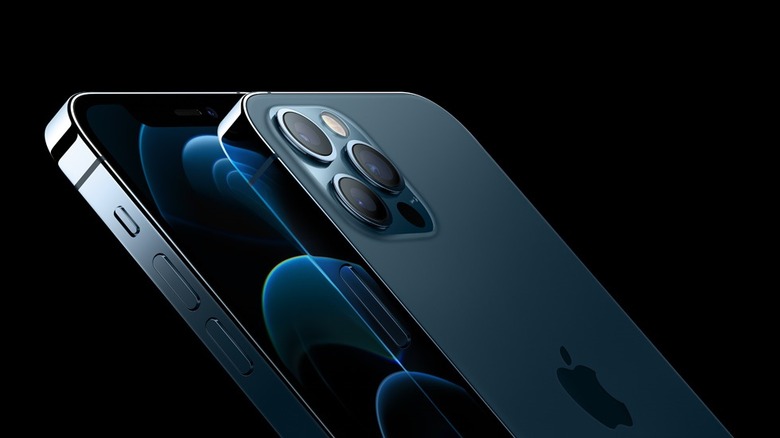Top Insider Leaks Exciting New Cameras Coming To Next-Gen iPhones
Many Android flagships nowadays feature multi-lens camera systems that include periscope cameras that can offer better optical zoom than what's possible on phones that don't have them. It all started a few years ago when Chinese smartphone maker Oppo demoed periscope camera tech in 2017, well ahead of its commercial debut. Huawei's P30 phones launched in early 2019 packed a periscope telephoto lens, and many Android handsets followed. Samsung used a periscope camera to power a gimmick zoom feature, the 100x "Space Zoom" on Galaxy S20 Ultra and S21 Ultra.
Periscope cameras are currently the only way to significantly upgrade optical zoom on phones without increasing the camera bump size. Light passes through a prism at a 90-degree angle and then goes through the camera's various lenses to reach the sensor. The lenses of a telescope lens aren't parallel with the phone's back, as it happens with every other camera. Instead, they're perpendicular to the back of the phone, as this design allows smartphone makers to increase the size of the camera. The result is better optical zoom, which can then be combined with digital zoom to achieve more magnification.
Apple has been notably absent from the periscope camera trend, and the company isn't going to use such a camera in an iPhone anytime soon, according to a well-informed insider.
Ming-Chi Kuo released another research note to investors (via MacRumors), addressing the various camera upgrades coming to future iPhones. Among them, there's a telephoto lens, but it's only the 2023 iPhone models that are going to get it.
2021 – iPhone 13
This year's iPhones will feature a new Face ID transmitter, Kuo reports. The component will be made of plastic rather than glass, which was previously impossible:
In the past, it was widely believed that the reason the Tx lens had to adopt glass material was to avoid distortion due to the heat generated by VCSEL operation. Our latest survey indicates that the Face ID TX lens for the new 2H21 iPhone will be made of plastic instead of glass, thanks to improved coating technologies and that the Tx plastic lens suppliers are Largan and Genius, with Largan being the primary beneficiary of this material change due to its higher supply share.
High-end iPhone 13 models will also feature an upgraded telephoto lens, which will feature 6-element lenses instead of 5.
2022 – iPhone 14
The 2022 iPhones will get additional zoom upgrades, with the telephoto lens going from 6 elements to 7. The camera modules will feature a new "unibody lens design" to reduce the size of the front camera.
To reduce the front camera module's size, we predict that the new iPhone will adopt a unibody lens design in 2H22 at the earliest. This design requires the lens and VCM [voice coil motor] to be assembled before shipping to CCM. Since Largan will start shipping iPhone VCM for new iPhones in 2H21, we believe that if Apple adopts the unibody lens design in the future, Largan, a new VCM supplier, can integrate lens design production advantages and benefit from this new trend.
Previously, Kuo said that some iPhone 14 models will receive a massive design change, a hole-punch display instead of the traditional notch design. It's unclear whether the "unibody lens design" is linked to that.
2023 – iPhone 15
Kuo previously said that the periscope camera will come to iPhone in 2022, but the analyst now says Apple delayed the upgrade to 2023. Apple has made its own improvements to optical zoom on iPhone, with the current models supporting 2.5x optical and 12x digital magnification. But the P30 Pro delivered 5x optical zoom thanks to the periscope camera back in 2019.
